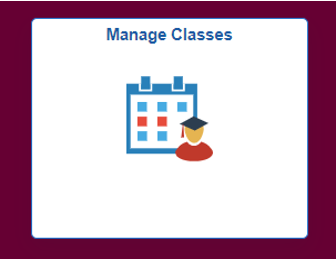All single term Arts and Science classes will be set up with wait lists. Multi-term, full year (A/B) courses cannot be set up with wait lists. The wait list option gives you an opportunity to join a wait list for a class that is full.
By adding yourself to a class wait list, you are acknowledging that you may be auto-enrolled and will therefore be responsible for the additional tuition and for dropping the class if you no longer wish to take it.
How does the wait list work?
Once a class is closed (full), students may choose to join the wait list for the class. You can see classes that are closed and have waitlists available by utilizing the class status filter after searching for classes.
When you choose to join a wait list you will be informed of your position on the wait list. Once a wait list has been initiated, the class will remain closed until the auto-enrol process is run. The auto-enrol process will be run every hour and will check for space in classes that have wait lists. If there is space in the class, the next person on the wait list will be enrolled in the class.
Note: A student’s position on the wait list will not change unless a student with a lower wait list number is auto-enrolled in the course or removes him/herself from the wait list. Therefore one student cannot normally move ahead of another student on the wait list.
If a space opens in the class I am wait listed for, how am I moved from the wait list into the class?
Students are auto-enrolled from the wait list into the class by their priority ranking in the wait list. For example, if a class is full and 3 students drop the class, students in wait list positions numbers 1, 2 and 3 will be auto-enrolled from the wait list if there are no factors preventing their enrolment. The student who was previously ranked number 4 will then be ranked number 1, and will be the next student auto-enrolled if another enrolled student drops the class. This process will continue until the wait list is empty or the deadline to add a class has occurred.
How do wait lists work when there are seats reserved for students in particular programs/plans?
When seats are reserved in a particular class, it means that the department wants to ensure that the students who require that class get priority. You may still wait list for the class, but priority will be given to the students who meet the reserve up until the reserve expires.
I see that there is a space available in the class, but the class is still showing as closed. Why?
When there are students on a wait list for a class, that class will remain closed until all of the students have been moved from the wait list into the class. In other words, when there are students on the wait list, another student cannot bypass the wait list and enrol in the class if they see that a space has become available.
Can I go on a wait list for a class that meets at the same time as another class that I am enrolled in?
SOLUS will allow you to go on a wait list for a class that is in conflict with an enrolled class, but you will never be enrolled into the class even if space opens up. SOLUS will not enrol you in a conflict. If your plan is to drop the conflicting class in place of the wait listed class, be sure to use the “SWAP” function when you add yourself to the wait list for the desired class. By using the swap function, SOLUS will add you to the wait listed course when a space becomes available and also drop you from the class you choose to swap.
I want to switch my lab/tutorial for a class I am enrolled in but the lab/tutorial is full. Can I wait list for the one I want?
If you are enrolled in a class and use the UPDATE function to switch to a section where the waitlist is active, you will LOSE YOUR SPACE IN THE CLASS! If the lab or tutorial you want is full and there is a wait list, SOLUS will drop you from the class and add you to the wait list for both the lecture and the lab/tutorial. Before choosing to UPDATE, it is a good idea to make sure that the lectures, labs, tutorials are open.
How do I know where I am on the wait list?
When you choose to be added to a wait list you will be informed of your position on the wait list. You can check your position on the list at any time in SOLUS. If you decide that you no longer want to be wait listed for the course, you can remove yourself from the wait list in SOLUS.
What are my chances of getting into the wait listed class?
That will depend on your position on the wait list and whether or not students enrolled in the class decide to drop the class.
How will I know if I have been enrolled in the class I wait listed for?
Once you are successfully enrolled into the class, you will receive an email sent to your @queensu.ca email account.
What would prevent me from getting on a wait list?
- You are trying to add yourself to a wait list before the start of your enrolment appointment time.
- You have exceeded the maximum number of units allowed for the term.
- You are trying to exceed the maximum number of wait list units.
- You do not meet the course requisites.
- There are no more wait list seats available for the course.
- You have a hold on your record that blocks enrolment.
I am number one on the wait list and a spot opened up in the class but I didn’t get in. How come?
If any of the following scenarios have changed since you were added to the wait list, you will not be auto-enrolled in the class even though a space is now available:
- You added another class that puts you over the maximum number of units allowed for the term.
- You dropped a class that was a pre- or co-requisite for the wait listed class.
- The wait listed class will cause a timetable conflict with another class in which you are enrolled.
- A hold that blocks enrolment has been added to your record since you were added to the wait list for the class.
Also, keep in mind that all components of the course must be open in order for you to be enrolled. If your wait listed class has a lecture and a lab, both of these components must be open in order for you to be enrolled from the wait list.
If none of the items above applies to you, please contact the Faculty Office for assistance.
TIPS:
- You should enrol in open classes prior to requesting to be added to a wait listed class.
- If you want to drop a class that you are enrolled in if you are able to be auto-enrolled from the wait list for another class, be sure to use the SWAP function in SOLUS to add yourself to the wait list.
- You should check your enrolment regularly to see if you have been added to the wait listed class. If you see that other students have been added ahead of you, you will know that there is a problem with your enrolment that is causing the auto-enrol to fail (see things to check above).
- If you no longer wish to be on the wait list you must remove your request in SOLUS.
- Once a class wait list has been initiated, no one other than the students on the wait list will be allowed to enrol in the class. If spaces become available in the class and the wait list is also empty then the class will become open again.
- Your position on the wait list will change only if other students ahead of you become auto-enrolled or remove themselves from the wait list.
How many classes can I be on a wait list for?
During the summer course registration period, full-time students may wait list in a maximum of 1 class per term. During this time period wait listed courses are included in your maximum term load of 5 classes per term. Part-time students may wait list for a maximum of 1 class per term. During this time period wait listed courses are included in your maximum term load of 3 classes per term.
During the Open Enrolment period, full-time students may wait list for a maximum of 2 classes per term. During this time period, wait listed courses are included in your maximum term load of 6 classes per term.
Note: If you wish to enrol in the maximum units per term but also want to be on a wait list for another class, you must use the SWAP feature when joining a wait list. Indicate which class you would like to be dropped if you are auto-enrolled from the wait list. If you simply ADD the wait listed class you will never come off the wait list because that would exceed your term limit.





